TOP 10 THINGS TO DO IN DERBY
An independent profile of a city surrounded by beautiful countryside, situated in the heart of the country.

A city of considerable character encircled by beautiful countryside forms part of the Derwent Valley Mills World Heritage Site. The Peak District National Park is only a few miles to the north and the National Forest is a short distance away to the south.
Derby is a great place for shopping. The centre is compact and pedestrian-friendly and has a wide range of shops, from well-known high-street names to specialist retailers. Good quality accommodation and food outlets to suit all tastes are readily available whether you are just exploring the city and local countryside or enjoying one of the many local events and festivals.
Located near the centre of the country, Derby has excellent communications and is well served by road, rail and air. The city lies at the junction of the main A6, A38 and A52 roads and junction 25 of the M1 is 15 minutes drive away. East Midlands Airport is an easy 12 miles drive to the southeast of Derby.
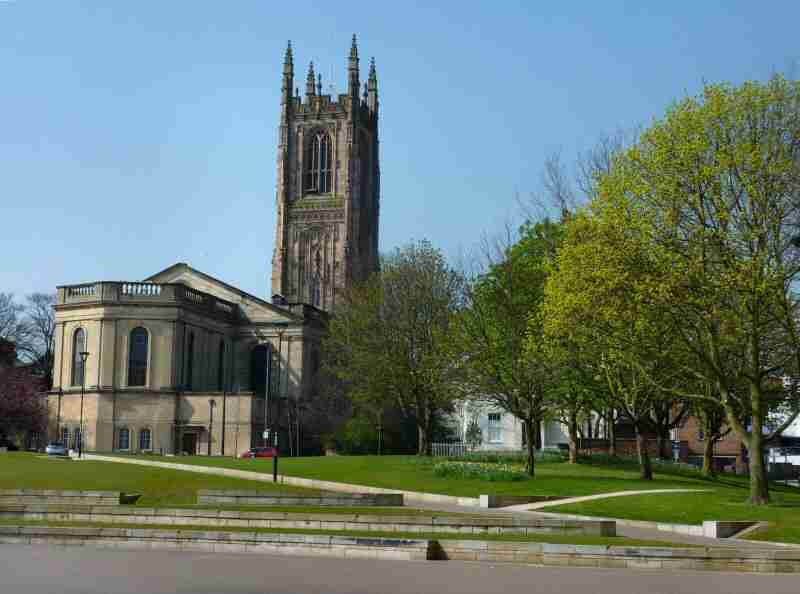
1. DERBY CATHEDRAL
Visible from a considerable distance, Derby Cathedral dominates the skyline with its impressive perpendicular tower. A church was built early in the 16th century, but worship has taken place on this site since the tenth century.
Light and spacious inside, the iron screen by Robert Bakewell is an inspirational masterpiece which came third out of fifty in a recent review of cathedral treasures. The tower at 212 feet is said to be the second-highest in England, next to Boston Stump, and it has the oldest ring of ten bells in the world. The bells were re-rung by the famous Derby Engineer George Sorocold in 1687, commemorated by a brass plaque in the chancel.
In 1978, the outer part of the Cavendish burial vault was converted into a small Crypt Chapel. The cathedral houses many interesting features and monuments, including Bess of Hardwick’s Monument, Joseph Wright’s Tombstone, the Bakewell Screen and much more.
On open days you can climb to the top of the tower for breathtaking views over Derby. Keep an eye on the Cathedral website for a list of prestigious events, including music, film and many other exciting events.

2. SILK MILL, MUSEUM OF MAKING
Derby Silk Mill is widely regarded as the site of the world’s first modern factory. It is one of the key sites of the industrial revolution and forms part of UNESCO’S Derwent Valley Mills World Heritage Site.
Today, the Silk Mill is home to the Museum of Making, which showcases the region’s 300-year history of making and celebrates its rich history of innovation. The museum is unique as it was built by hundreds of local volunteers with the support of local industries.
Visitors enter the new museum via the Grade 1 listed Bakewell Gates that have stood in front of the Silk Mill since 1725. Then follow a trail through the 30,000 collections, which are displayed in unique ways. Suspended above visitors’ heads in the new Civic Hall is a seven-tonne Rolls-Royce Trent 1000 engine. The much-admired Midland Model Railway is in the Railway Gallery.
A museum like no other and certainly one not to be missed.
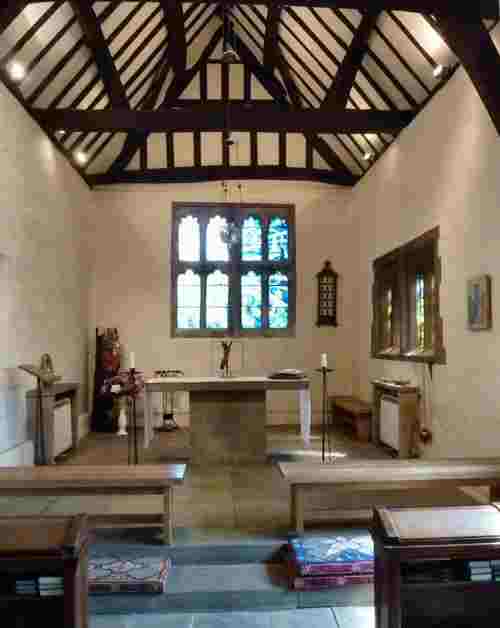
3. ST MARY’S BRIDGE CHAPEL
On the banks of the River Derwent, in Derby, is one of only six bridge chapels left in the British Isles. It stands beside the 18th-century St Mary’s Bridge, which replaced a medieval bridge to which the chapel was originally attached. The precise date when the first bridge chapel came into existence is uncertain, but it is likely to have been around the late 13th to the early 14th century when it was built on the same site as the present chapel.
At the time when the chapel was built, travel was a dangerous occupation with robbery and murder not uncommon and the bridge chapel offered spiritual reassurance to travellers. The chapel also served as a collection point for tolls levied on traffic entering Derby. It was the resident hermit’s responsibility to collect the tolls on people and livestock crossing the bridge, the only crossing point of the River Derwent, into the town.
The bridge chapel is not particularly impressive from the outside, nor is it blessed with a quiet location, sandwiched between the Derby Ring Road and the still busy road across St Mary’s Bridge. Once inside all that changes, the noise vanishes and there is a feeling of peace and tranquillity. The white-painted walls, the simple furniture and the lack of fuss all add to the attraction of this wonderful place.
The roof timbers are particularly striking, one beam principally because of its medieval carvings. The much-admired stained glass in the east window depicts various aspects of the Virgin Mary. In harmony with the rest of the chapel is the simply designed altar, the work of Ronald Pope. Open several days a year it is an inspirational place to visit.
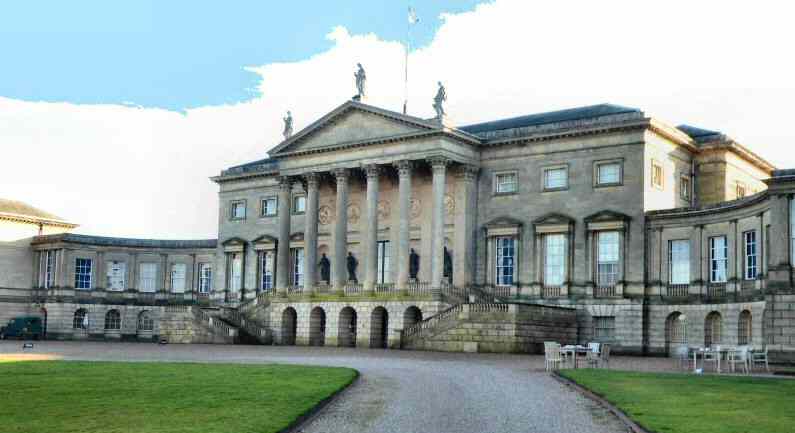
4. KEDLESTON HALL
A lavishly decorated National Trust property in 800 acres of beautiful parkland. The hall is one of the best surviving examples anywhere of the work of Robert Adam. Exquisitely decorated with fine collections of paintings, furniture and sculptures. The marble hall has been described as ‘one of the most magnificent apartments of the 18th century in England.
The ancient church is all that remains of the medieval village of Kedleston. At that time a public road passed just over 150 yards from the old red brick house which the current building replaced. When the house was being built, the old village was demolished and the public highway moved. The houses were rebuilt outside the park boundary, the park was extended and landscaped and the turnpike road rerouted
The gardens were landscaped in the form of a fashionable Pleasure Ground of that period. A ha-ha, or sunken wall, was built to allow uninterrupted views of the parkland, while at the same time not allowing the animals to get too close to the house.
After enjoying a visit to the house. Take a relaxing walk around the park and enjoy the wonderful scenery. Walk sheets are available at the National Trust office, detailing both long and short walks. Alternatively, you can use the walk on this website which describes the points of special interest.
There is always plenty to do at Kedleston and keep the children occupied.

5. THE ARBORETUM
Joseph Strutt, a local mill owner and the first Mayor of the Reformed Borough wished to give the people of Derby a free “Pleasure Ground” for exercise and relaxation. He commissioned John Claudius Loudon a renowned writer and garden designer to draw up the plans.
Loudon laid the park out with mounds planted with trees and shrubs to disguise the paths and park boundaries. This was done to give the illusion of more space. To encourage people to walk all around the 11-acre site, where no two species of tree or shrub were the same.
On Thursday 17 September 1840, Joseph Strutt handed over the deeds of the Arboretum to the town council, in Derby. This was followed by a large procession from the town hall to the Arboretum, which marked the beginning of three days of public festivities, to celebrate the birth of England’s first public park.
The Arboretum is included in the English Register of Parks and Gardens and attracts visitors from all over the world. It was restored in 2007. The main entrances are on Reginald Street, Grove Street, Rosehill Street and Arboretum Square, off Osmaton Road.
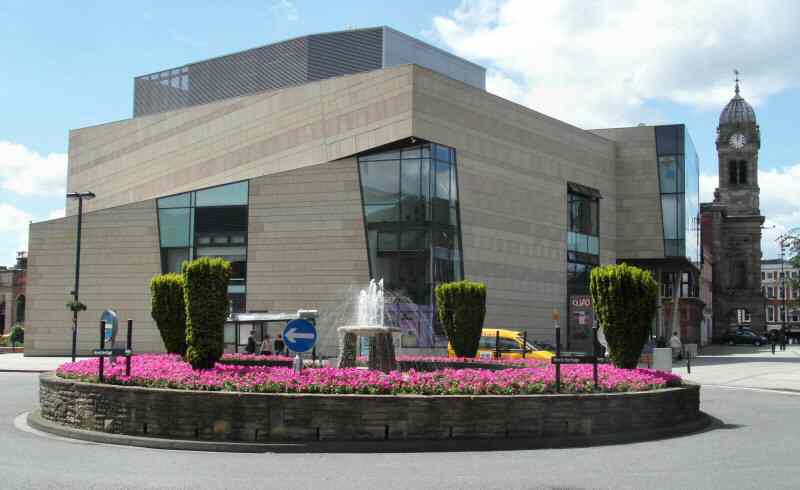
6. THE QUAD
The Quad is an international centre for engagement in contemporary art and film. It opened in September 2008 and is proving very popular with Derby people and visitors alike. The building cost £11 million and is purpose-built. With a gallery, two cinema screens, a café bar and a workshop that anyone can hire.
It is a registered charity and opens daily. Two state-of-the-art Cinema screens show the best in independent, world and Hollywood films every day. The gallery is always FREE to visit. For those who want something to eat and drink, there is a cafe with bar facilities. The delicious homemade food is sourced locally wherever possible.
Quad’s activities generate millions of pounds. As well as obtaining positive national and international media coverage for Derby.
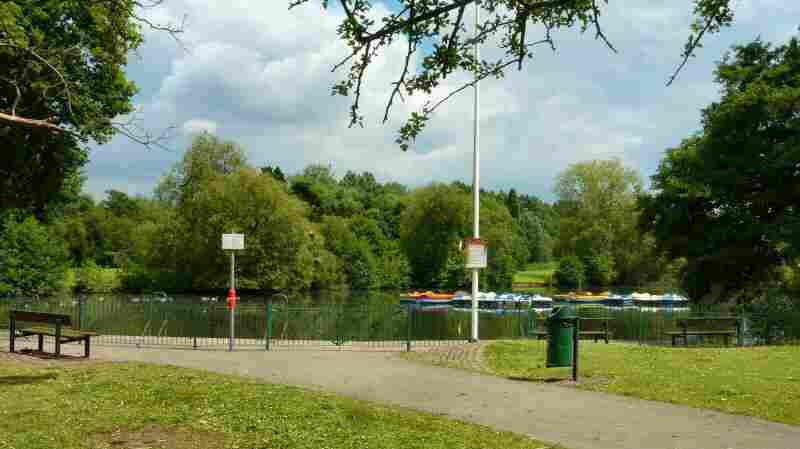
7. MARKEATON PARK
Markeaton Park, with its numerous attractions and special events, is a special place for the young and not-so-young to spend valuable leisure time. One of Derby’s largest parks with over 207 acres of parkland it attracts an estimated one million visitors per year and is probably the most visited park in the East Midlands.
The main entrance is off Markeaton traffic island where the A38 and A52 cross. Alternatively, it can be entered off Markeaton Lane, on the opposite side of the park, where there is additional parking and quick access to the Mundy Play Centre. Where young children will find plenty to keep them occupied for hours.
Following the demolition of Markeaton Hall, a craft village now occupies what were once the hall stables. It consists of several units selling a wide range of goods, where visitors can watch skilled craftsmen. Recently extensively refurbished, it is open throughout the year, but the times of opening of individual units vary. A new Visitor Centre provides more information about the park and recent restoration.
The former Orangery, now a listed building, has been converted into attractive tea rooms. Where weather permitting, visitors can sit outside and admire the scenery before or after a walk around the park. The slightly more adventurous can enjoy a rowing boat trip or perhaps visit the Famous Trains exhibition.
A lake was dug out in the 1920s to provide men with work during a time of depression. It was extended in 1933-34 and opened in July 1934. The pond that forms the source of Markeaton Lake is reputed to have been the site of the Mill Pond mentioned in the Domesday Book. Close by is a delightful walk through Aldercar Woodland. The walk is particularly attractive in the springtime when the daffodils, are in bloom.

8. IRON GATE
Iron Gate derives part of its name from the arrival of the Vikings in 874. Their language, alongside Saxon and English, would have been spoken for many generations. The suffix ‘gate’ is from the Norse word geata, which meant street in their language – street of the ironworkers. At one time the street used to be regarded as the Regent Street of Derby. And it still retains an important role in the life of the city. It was described as ‘consisting of inns and shopkeepers,’ in the 1700s and this still applies today.
In 2009, the Academy of Urbanism, whose members are top-level urban planners and architects. Short-listed Iron Gate as one of Britain’s greatest streets. Recognition by such a significant national body. Gave testament to Derby’s growing stature as an important city in the UK. As well as increasing awareness of the Cathedral Quarter as an important area with its own special identity.
Iron Gate was widened, in 1869, by the demolition of the shops and inns on the eastern side and rebuilt over twenty years. H I Stevens, George and Edwin Thompson and G H Sheffield all contributed one or more shops in a wide variety of styles. It remains one of the principal streets in Derby with a mix of quality shops, pubs, cafes and restaurants and services. Where pride of place goes to All Saints Church, which became Derby Cathedral by Royal Charter in 1927. It was founded before the Norman Conquest, but no trace exists of the original church.

9. MUSEUM AND ART GALLERY
It was not until 1878 that the Duke of Devonshire donated a collection of books and papers and a year later. In a building donated by Michael Thomas Bass, the Derby Free Library and Museum was opened.
In 1914, the curator’s house that sat alongside the library was demolished. To make way for an extension to house the recently acquired Bemrose Library. A further extension was completed in 1965. To create a wing for the Museum and Art Gallery.
Today, the museum runs a programme of special exhibitions. Supporting a series of permanent displays. These relate to the city’s archaeology, porcelain, paintings, history, local regiments, geology and wildlife. The library has closed and moved to the Council House
Derby Museum and Art Gallery hold the world’s finest collection of Joseph Wright paintings. Born in Derby he became internationally famous for his paintings. They include portraits, landscapes, and subjects from literature. As well as scenes of industry and scientific equipment.
The relatively new Ceramics Gallery provides an exciting additional attraction. An award-winning cafe, where visitors can sit and relax. The Bonnie Prince Charlie Room commemorates the important role played by Derby in the Jacobite Uprising of 1745.
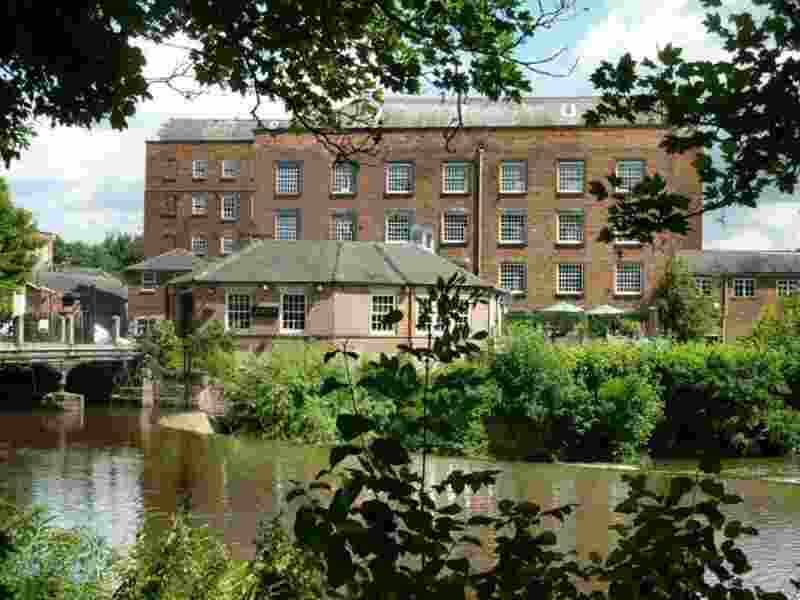
10. DARLEY ABBEY MILLS
Beautiful Darley Abbey Park is only a short walk from the centre of Derby. Where the old village and the mills form part of the Derwent Valley Mills World Heritage Site. Because of the pioneering work of the Evans family. Thomas Evans, born in 1723 and educated at Cambridge University, was the driving force. He expanded the family business and became a leading industrialist.
The old village of Darley Abbey is at its most impressive when approached through Darley Park on the western side of the River Derwent. There are several entrances to the park. On foot from either side of the River Derwent. By road along Darley Park Drive and Mile Ash Lane on the northern side of the park.
The Boar’s Head Cotton Mill, on the east bank of the River Derwent, was one of the most important industrial enterprises, in an age of great innovation and progress. The boar’s head trademark, that Evans used to market his thread. Achieved recognition in many of the parts of the world that he traded, as a symbol of quality.
Following the construction of the first cotton mill in 1783, extensions took place at regular intervals. The mill complex eventually comprising of five main mills, and an assortment of sheds. Where dyeing and drying took place. Other buildings on the site were used for offices, stabling and domestic purposes. A weir was constructed diagonally across the Derwent to control the flow of the river and a bridge was built to link the village and mills.
All this industrial development required a substantial labour force. Generous inducements were offered to potential workers. In the form of above-average wages and new well-built brick houses, together with a parcel of land and a cow. Many of the houses can still be seen today as well as the old school and church.
